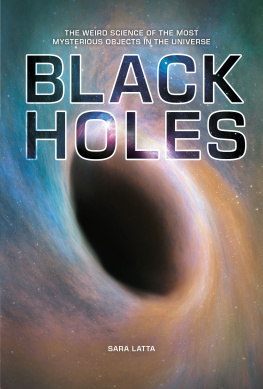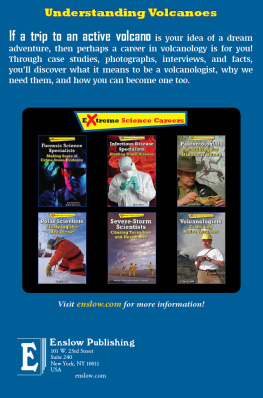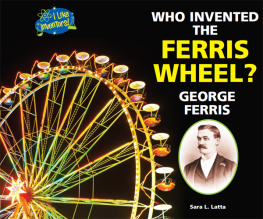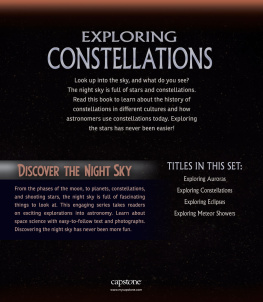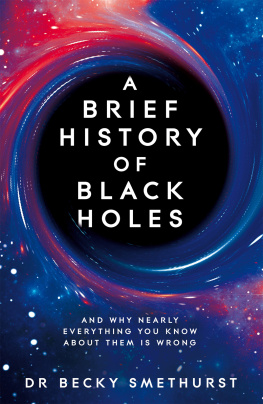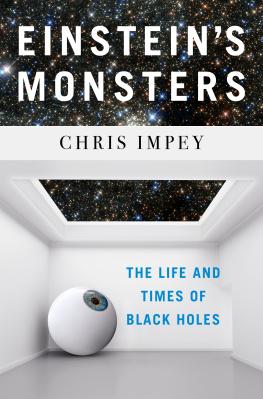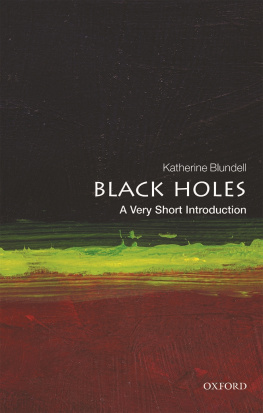Sara L. Latta - Black holes : the weird science of the most mysterious objects in the universe
Here you can read online Sara L. Latta - Black holes : the weird science of the most mysterious objects in the universe full text of the book (entire story) in english for free. Download pdf and epub, get meaning, cover and reviews about this ebook. year: 2017, genre: Art. Description of the work, (preface) as well as reviews are available. Best literature library LitArk.com created for fans of good reading and offers a wide selection of genres:
Romance novel
Science fiction
Adventure
Detective
Science
History
Home and family
Prose
Art
Politics
Computer
Non-fiction
Religion
Business
Children
Humor
Choose a favorite category and find really read worthwhile books. Enjoy immersion in the world of imagination, feel the emotions of the characters or learn something new for yourself, make an fascinating discovery.
- Book:Black holes : the weird science of the most mysterious objects in the universe
- Author:
- Genre:
- Year:2017
- Rating:3 / 5
- Favourites:Add to favourites
- Your mark:
- 60
- 1
- 2
- 3
- 4
- 5
Black holes : the weird science of the most mysterious objects in the universe: summary, description and annotation
We offer to read an annotation, description, summary or preface (depends on what the author of the book "Black holes : the weird science of the most mysterious objects in the universe" wrote himself). If you haven't found the necessary information about the book — write in the comments, we will try to find it.
Black holes : the weird science of the most mysterious objects in the universe — read online for free the complete book (whole text) full work
Below is the text of the book, divided by pages. System saving the place of the last page read, allows you to conveniently read the book "Black holes : the weird science of the most mysterious objects in the universe" online for free, without having to search again every time where you left off. Put a bookmark, and you can go to the page where you finished reading at any time.
Font size:
Interval:
Bookmark:
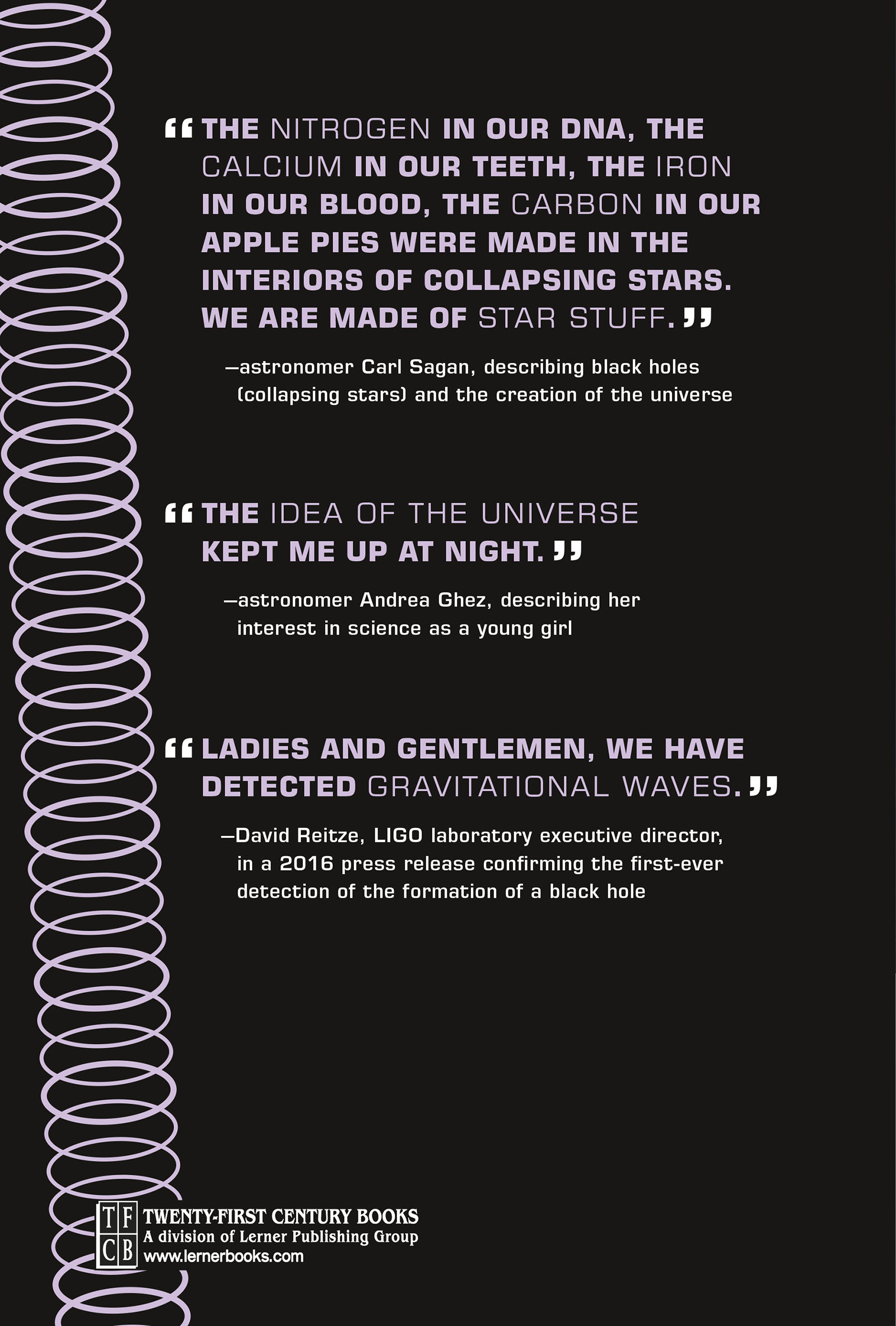

This book is dedicated to the next generation of scientists and engineers; to the dreamers, thinkers, tinkerers, and creators. You stand on the shoulders of giants.
Text copyright 2018 by Lerner Publishing Group, Inc.
All rights reserved. International copyright secured. No part of this book may be reproduced, stored in a retrieval system, or transmitted in any form or by any meanselectronic, mechanical, photocopying, recording, or otherwisewithout the prior written permission of Lerner Publishing Group, Inc., except for the inclusion of brief quotations in an acknowledged review.
Twenty-First Century Books
A division of Lerner Publishing Group, Inc.
241 First Avenue North
Minneapolis, MN 55401 USA
For reading level and more information, look up this title at www.lernerbooks.com .
Main body text set in Eurostile LT Pro 11/15
Typeface provided by Adobe
Library of Congress Cataloging-in-Publication Data
Names: Latta, Sara L.
Title: Black holes : the weird science of the most mysterious objects in the universe / by Sara Latta.
Description: Minneapolis : Twenty-First Century Books, [2017] | Audience: Age 1318. | Audience: Grade 9 to 12. | Includes bibliographical references and index.
Identifiers: LCCN 2016038386 (print) | LCCN 2016040852 (ebook) | ISBN 781512415681 (lb : alk. paper) | ISBN 781512448634 (eb pdf)
Subjects: LCSH: Black holes (Astronomy)Juvenile literature | AstronomyJuvenile literature.
Classification: LCC QB843.B55 L3945 2017 (print) | LCC QB843.B55 (ebook) | DDC 523.8/875dc23
LC record available at https://lccn.loc.gov/2016038386
Manufactured in the United States of America
1-39925-21391-4/13/2017
9781512467833 mobi
9781512467840 ePub
9781512467857 ePub
Table of Contents
What Is a Black Hole?
F irst things first. Did you know that black holes are made of warped space and warped time? They have mass, but no matter. Their gravitational pull is so great that nothing, not even light, can escape their grasp. They sound simple, until you try to wrap your brain around them. Even Albert Einstein, a physicist whose general theory of relativity (1915) predicted the existence of black holes, refused to believe that they were real. In a 1939 paper, Einstein said, The essential result of this investigation is a clear understanding as to why the Schwarzschild singularities [as black holes were known at the time] do not exist in physical reality. Or nice idea, pal, but hey, we live in the real world.
To really understand black holesand maybe to feel smarter than Einstein when you realize they really do existit helps to take a trip back in time. All the way back, in fact, to the late seventeenth century. Thats when an apple falling from a tree is said to have led English physicist and mathematician Sir Isaac Newton to formulate his law of universal gravitation.
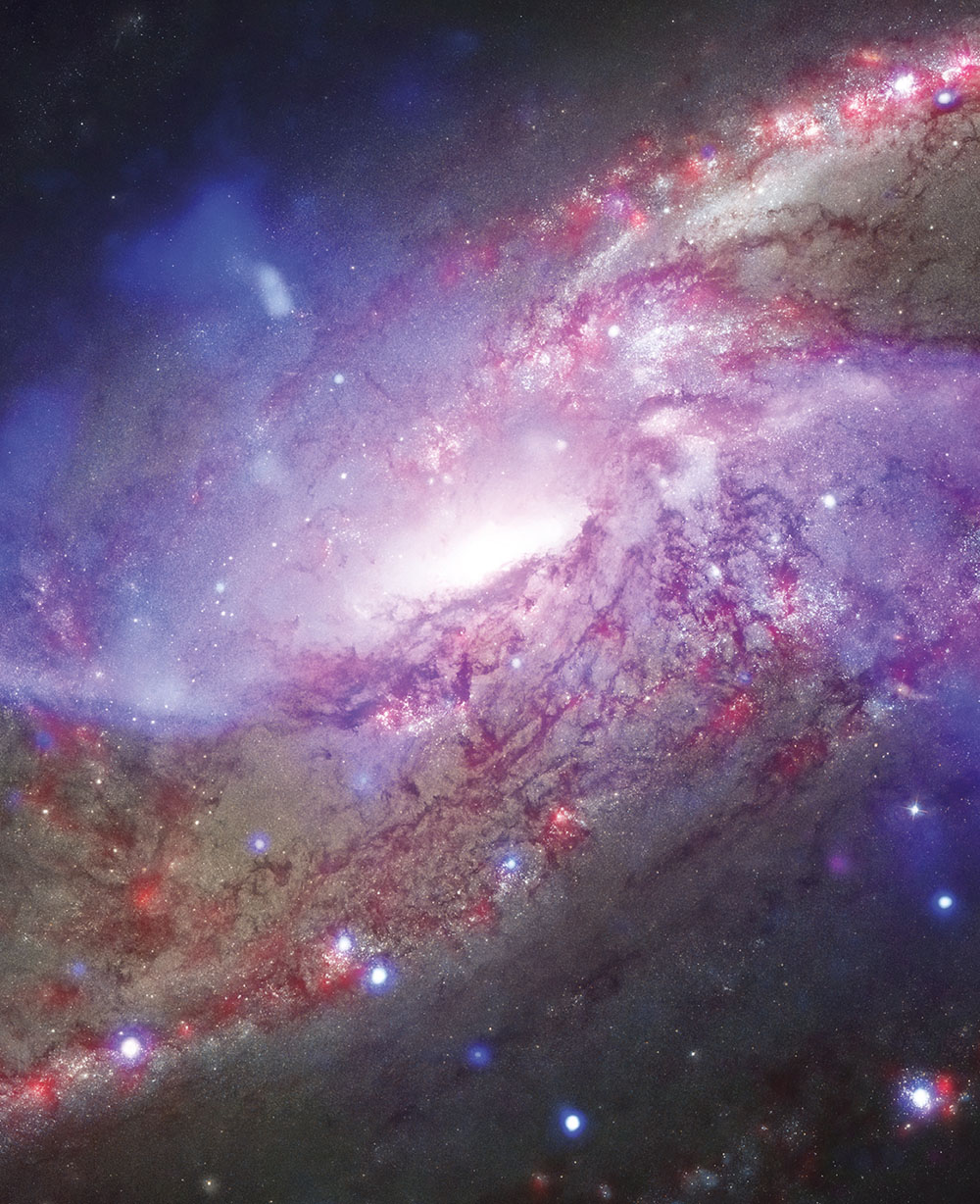
Data from four different types of telescopes created this image of the spiral galaxy Messier 106, also known as NGC 4258. At the center of this galaxy is a massive black hole.
Gravity: Its Not Just a Good Idea, Its the Law
By the mid-sixteenth century, scientists had discovered that the planets in our universe travel around the sun in an elliptical (oval) pattern. Nobody knew why the planets moved that way or what kept them in orbit. Newton tackled that problem in his 1687 book Philosophi Naturalis Principia Mathematica (Mathematical Principals of Natural Philosophy)known as the Principia for short. In it, he described three laws of motion. Although it took Newton more than five hundred pages to explain his laws, they boil down to three sentences:
- Every object stays in its state of rest or uniform motion in a straight line unless some kind of force acts upon it.
- The force acting on an object is equal to the mass of that object times its acceleration. In mathematical form, it is expressed like this: F= ma , where F is force, m is mass, and a is acceleration.
- For every action, there is an equal and opposite reaction.
Oh, Thats Just a Theory!
In everyday conversation, people tend to use the word theory to describe a hunch or guess. Evolution? say creationists (people who believe in the biblical explanation for the creation of the universe). Thats just a theory.
In fact, evolution is a theory. To scientists, a theory is not a half-baked idea. A theory explains a collection of facts about some aspect of the natural world. It can be tested and used to make predictions. Peter Godfrey-Smith, a philosopher of science at the City University of New York and at the University of Sydney in Australia, compares theories to maps. Just as a map represents an area of land, a theory represents a territory of science. A road map shows highways, rivers, and cities that we know exist. In the same way, a theory is made up of observable facts. A good theory, like a good map, is an accurate depiction of the physical world.
Its important to understand the difference between facts, laws, hypotheses, and theories. When an apple drops from a tree, it falls down, not up. Thats a fact. Newtons law of universal gravitation describes the observation that the apple falls down. It allows us to calculate all sorts of things about a falling apple: the strength of the gravitational pull between it and Earth, its acceleration as it falls, how long it will take to hit a daydreaming Newton on the head, and so on.
The How and Why of Gravity
What Newtons law doesnt tell us is why gravity exists or how it works. Scientists develop testable hypotheses, or smart guesses, to explain observations. Until the late nineteenth century, scientists believed that gravity was due to what scientists call ether, tiny invisible particles all around us that pushed things down. But the evidence didnt support that hypothesis, so scientists rejected it.
Einstein proposed that what we perceive as gravity is actually the result of a distortion in the fabric of space and time. Einsteins hypothesis held up through repeated observation and experimentation. So it became a scientific theory: the general theory of relativity. Not only did Einsteins theory explain gravitational attraction, but it also predicted gravitational waves and black holes. Theories may change as scientists make new discoveries. They can be adapted to include that new knowledge.
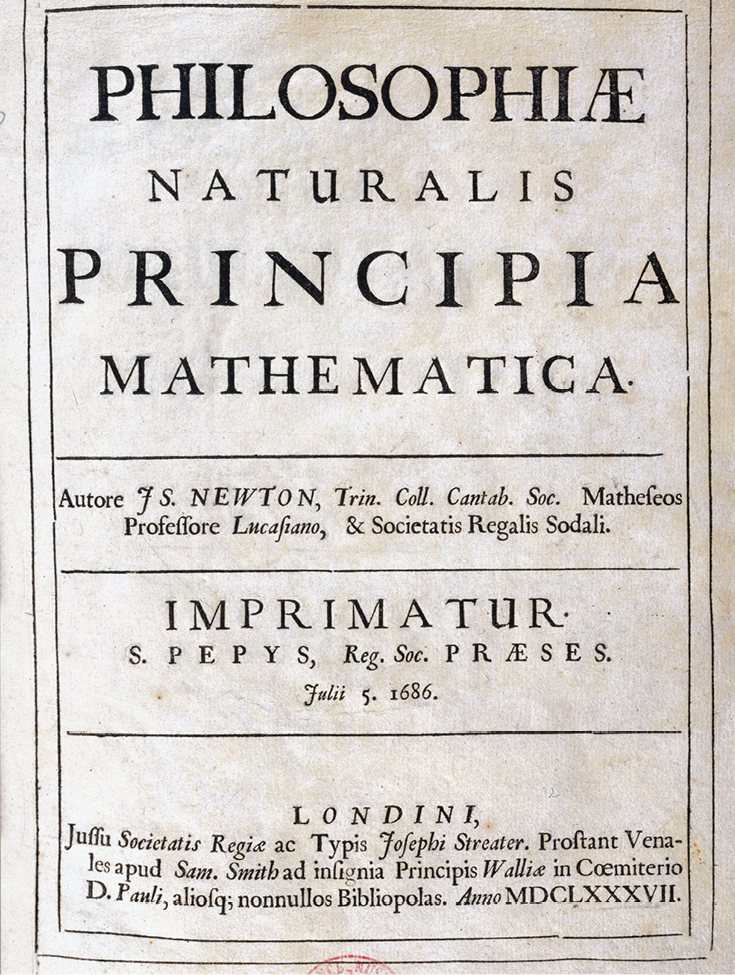
Isaac Newton (16421727) was a physicist and mathematician. He laid out what he understood about laws of motion, the behavior of fluids, and gravitation in his book Philosophiae Naturalis Principia Mathematica. The book established Newtons reputation as one of the greatest minds of science.
Newton used those laws in a thought experiment to try to understand the motion of the planets. It went something like this: What if he were to shoot a cannonball from the top of a very high mountain where, just as in outer space, there is no air resistance? Without a force to act on it, the cannonball would continue in a straight line forever. But, in reality, Newton knew that the cannonball would move forward and eventually drop back to Earth. Newton came up with the idea of gravity to name the downward-pulling force acting upon the cannonball.
Font size:
Interval:
Bookmark:
Similar books «Black holes : the weird science of the most mysterious objects in the universe»
Look at similar books to Black holes : the weird science of the most mysterious objects in the universe. We have selected literature similar in name and meaning in the hope of providing readers with more options to find new, interesting, not yet read works.
Discussion, reviews of the book Black holes : the weird science of the most mysterious objects in the universe and just readers' own opinions. Leave your comments, write what you think about the work, its meaning or the main characters. Specify what exactly you liked and what you didn't like, and why you think so.

